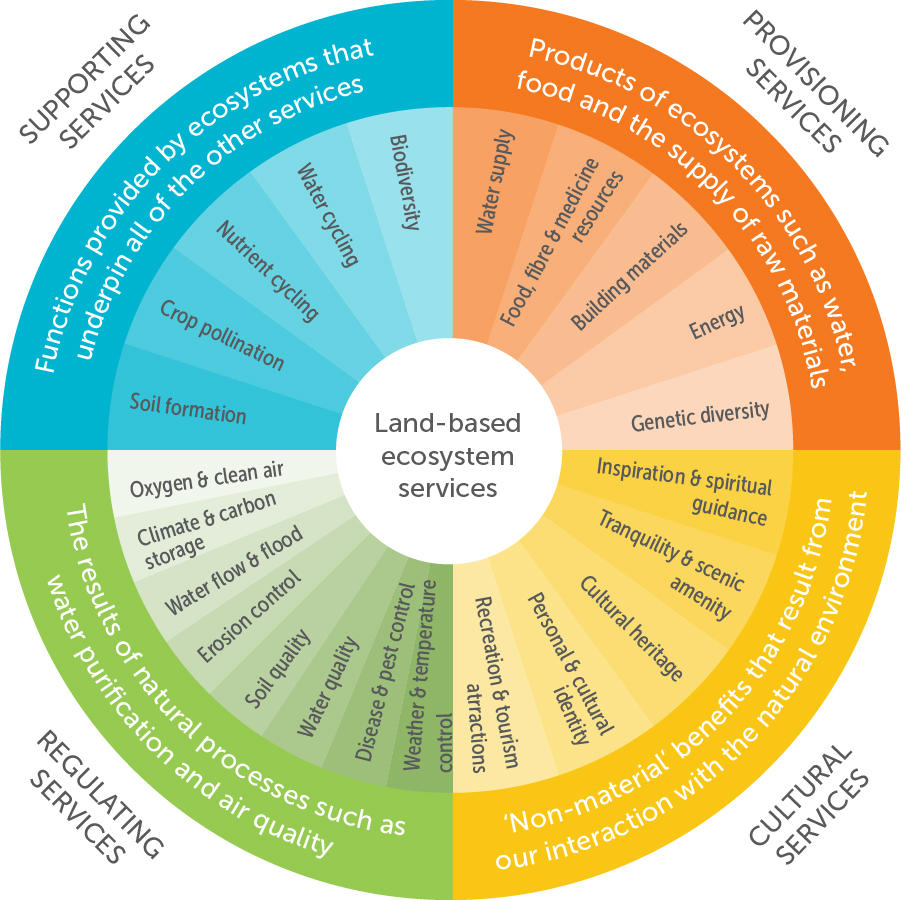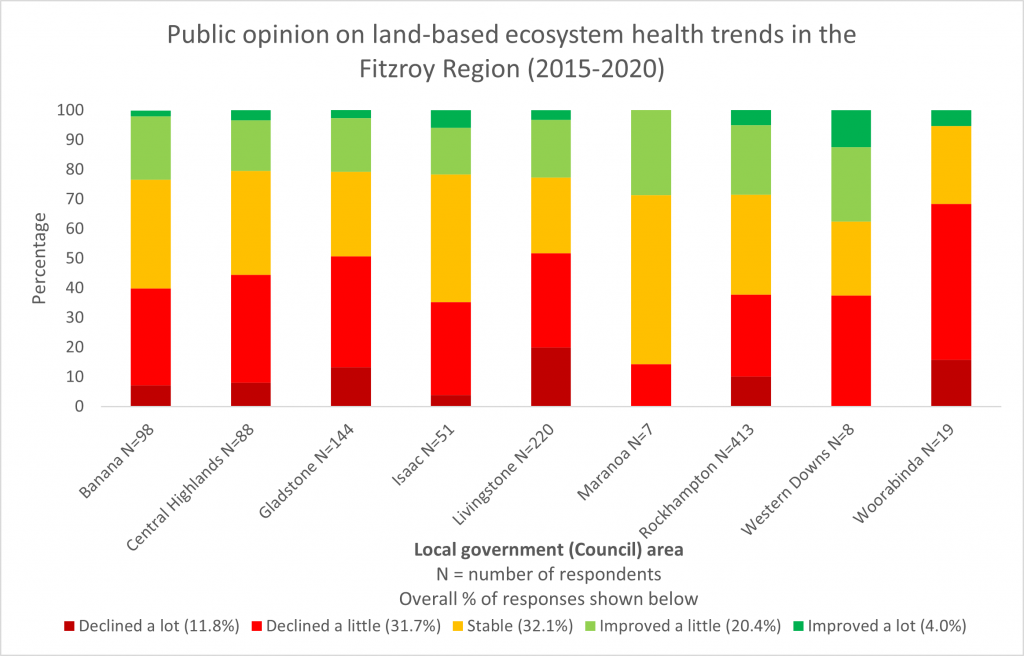Land-based Ecosystems
Plants, animals and land-based ecosystems deliver many unseen and essential services. They support our wellbeing, businesses and lifestyles on a daily basis.
Land-based ecosystems provide a critical workforce
While it may seem strange to think about plants, animals and ecosystems in terms of the services they provide, the truth is, if we lose any part of our land-based ecosystems, our ability to maintain our health, homes, businesses and economy decreases.
With over 6,700 different native plant and animal species making our region home, it’s not hard to imagine just how complicated, diverse and widespread our land-based ecosystems are. Individually and as a whole they provide us with tourism attractions, clean air and water, pollinated crops, scenic amenity and much, much more. Every plant and animal plays an important role, and while we don’t always understand or see their importance, they are connected with everything around it. Like any workplace, losing just one worker means vital jobs and services are left undone. Losing a lot of workers results in unintended and unwanted consequences that can impact whole communities, including people, for decades or longer.
Our land-based ecosystems, including all our native plants and animals, provide many benefits we don’t think about very often but can’t live without.

Diagram adapted from IUCN
Together, native plants, animals and ecosystems help to:
- prevent runoff (flash flooding), keep our waterways clean and protect our Great Barrier Reef
- build soil, keep it healthy and where it belongs
- provide food and homes for other native plants and animals (foodchains)
- lessen the impacts of heatwaves, dust storms, floods and droughts on us
- provide medicines, foods, materials and spaces that people rely on
- keep our towns and cities attractive and liveable
- form part of our regional, state and national identity.
DID YOU KNOW? According to a 2019 survey of over 55,000 people, ‘appreciation of the natural environment’ was considered the second most important aspect of ‘being Australian’; the first was ‘respecting our institutions and laws.
Source
Our unpaid workforce needs our help
Just like people, native plants and animals need families, healthy communities and access to essential services to thrive. When too much vegetation is cleared or key plants and animals in the food chain disappear, the whole system starts breaking down. Everything that remains is under increased pressure to perform well without access to everything it needs to survive. As a result, the remaining plants, animals and systems become weaker or disappear altogether.
In the central Queensland area, there are many threats to our native plants and animals and the land-based ecosystems they support. These threats are caused by a combination of how we use and manage our landscapes today, what has happened in the past, and what is happening right around the world.
Below provides a snapshot of the most significant threats to land-based ecosystems across our region:
- Land clearing to accommodate agriculture, urban areas, industry and roads
- Changes in weather patterns including increasing temperatures, dry periods and extreme rain events
- Uncontrolled fires, fires that are too intense, at the wrong time of year and/or fires that are too frequent
- Overharvesting or removing too much or key parts of the ecosystem (this leads to loss of biodiversity and sometimes whole populations of plants and animals)
- Feral animals, weed infestations and domestic animals that hunt native animals or introduce diseases
- Introducing toxins and waste to the system (this includes human and pet food, rubbish and chemicals – both accidentally and intentionally)
- Changes in the way water moves across and through the landscape (which means some areas get too much water and others don’t get enough)
DID YOU KNOW? Over half of the world’s gross domestic product (GDP) is moderately or highly dependent on natural capital and ecosystem services. A recent estimate values the ecosystem services provided by biodiversity at US$33 trillion per annum which is close to the combined GDP of the United States and China!
Source
Discover the biggest threats to our natural assets
 Our critical support workers are suffering badly
Our critical support workers are suffering badly
Central Queensland is home to four of the top 12 electorates in Australia for threatened species habitat loss between 2000 and 2017. Not only that, Queensland is by far the worst-performing state in the whole of Australia for native vegetation clearing. Some clearing is regulated and known about, while some of it is not. If we continue the way we are, we risk destroying the very plants, animals and ecosystem services that underpin our agricultural and tourism industries and make our region attractive to live in.
As we get more hot days, higher temperatures, longer dry spells, and bigger and more frequent severe weather events, our native plants, animals and ecosystem services will suffer along with us. Combined with increasing pressures to house more people and produce more food means we all have a role to play right now in protecting and providing for our native plants and animals.
DID YOU KNOW? In our highly modified landscapes, cities and towns provide critical, and sometimes the only, habitat for native plants and animals. This means every backyard can play a vital role in safeguarding what is left.
Source
In 2020, we asked our community how they thought the health of land-based ecosystems in their local government area were trending based on the preceding five years. The majority of respondents considered them stable to declining.

Asset status is a ready estimator based on:
- Global, Australian and Queensland reports
- The likely impact on our businesses, communities, economy and future if we change nothing in the next five years
- Results of the 2020 regional natural assets community survey
Our region is not at a point where available data can be collated and analysed using a scientifically validated model to produce an accurate report on the status of our region’s six region’s natural assets and two key drivers.



